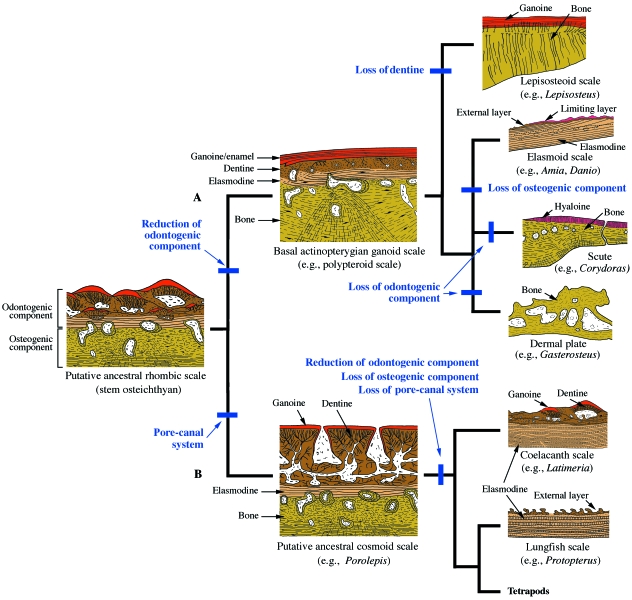Fig. 16.
A revised scenario depicting the evolution of the integumentary skeleton in non-tetrapods. Although at present uncertain, we hypothesize that elasmodine is present in the ancestral rhombic scales and in cosmoid scales. Furthermore, we propose that similar to modern polypteroid-type ganoid scales, the ancestral rhombic scale was composed of tissues derived from two discrete skeletogenic cell populations: odontogenic and osteogenic. (A) Among actinopterygians, the diversity of scale-type structure can be explained due to the loss and/or modification of these skeletogenic cell components. Loss of the odontogenic component results in the absence of dentine from the lepisosteoid-type ganoid scale. In contrast, loss of the osteogenic component (along with reduction and modification of the odontogenic component) gives rise to the elasmoid scale. Independent losses of the odontogenic component gives rise to the development of dermal plates and to the scutes. Similar to lepisosteoid-type ganoid scales, scutes are characterized by the presence of a well-mineralized layer (hyaloine), similar if not equivalent to ancestral ganoine. (B) Among sarcopterygians, the pore-canal system of the cosmoid scale is lost, followed by reduced and modified expression of the odontogenic-derived components. In actinistians and dipnomorphans these modifications, combined with the loss of the osteogenic component, occur independently (in parallel), giving rise to the sarcopterygian elasmoid scale. Unlike modern dipnoans, extant coelacanths continue to develop superficial odontodes.

